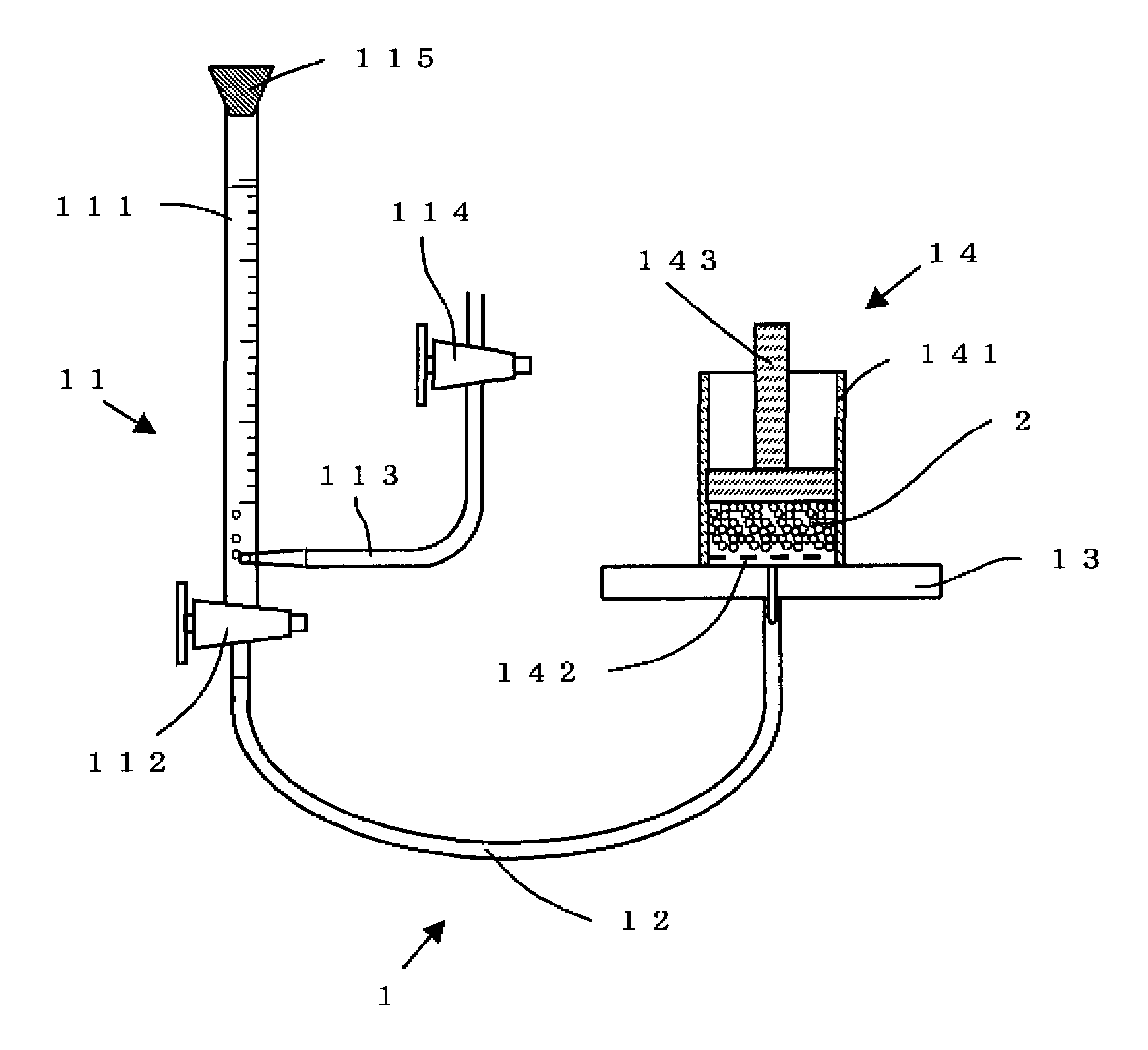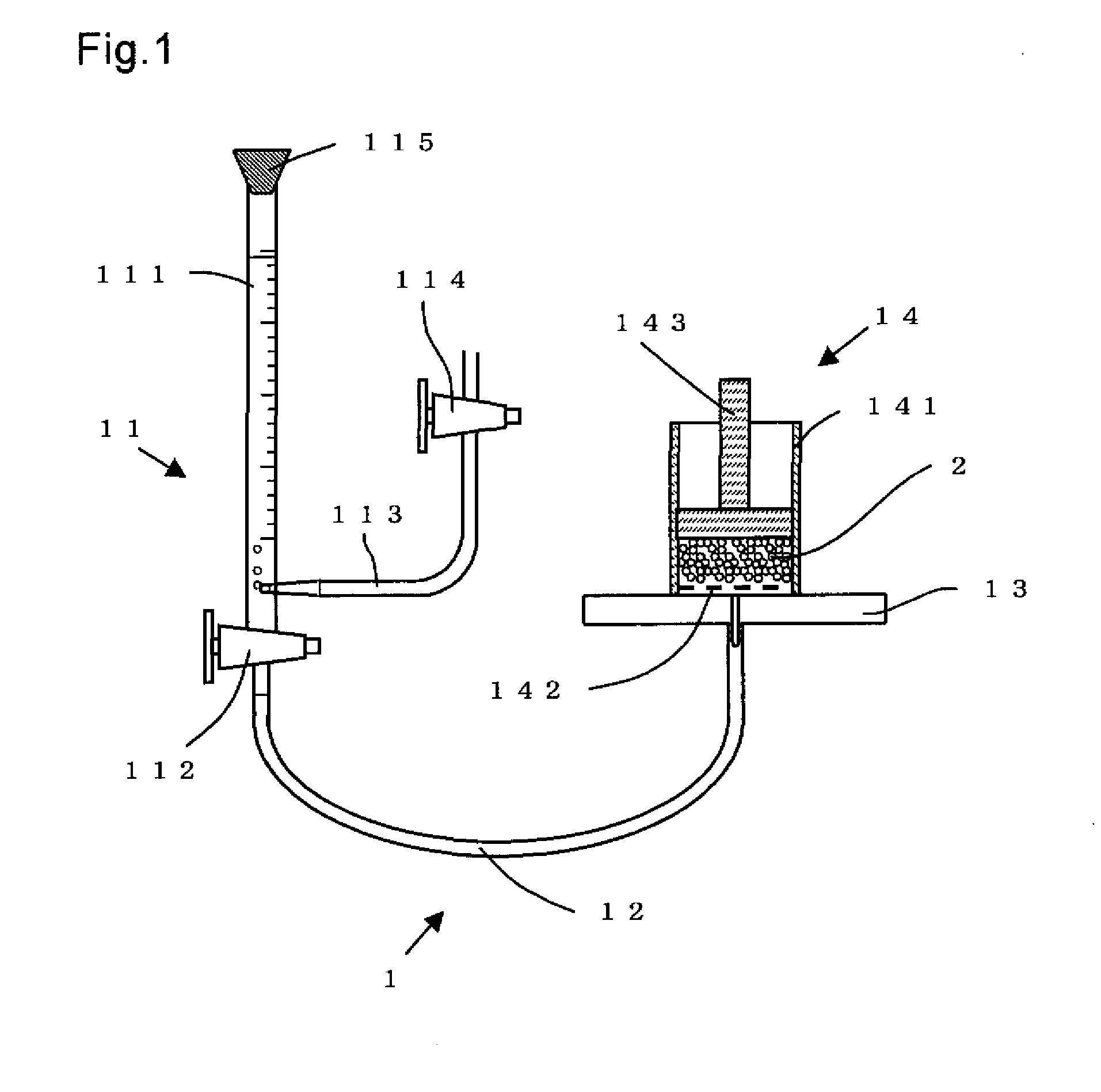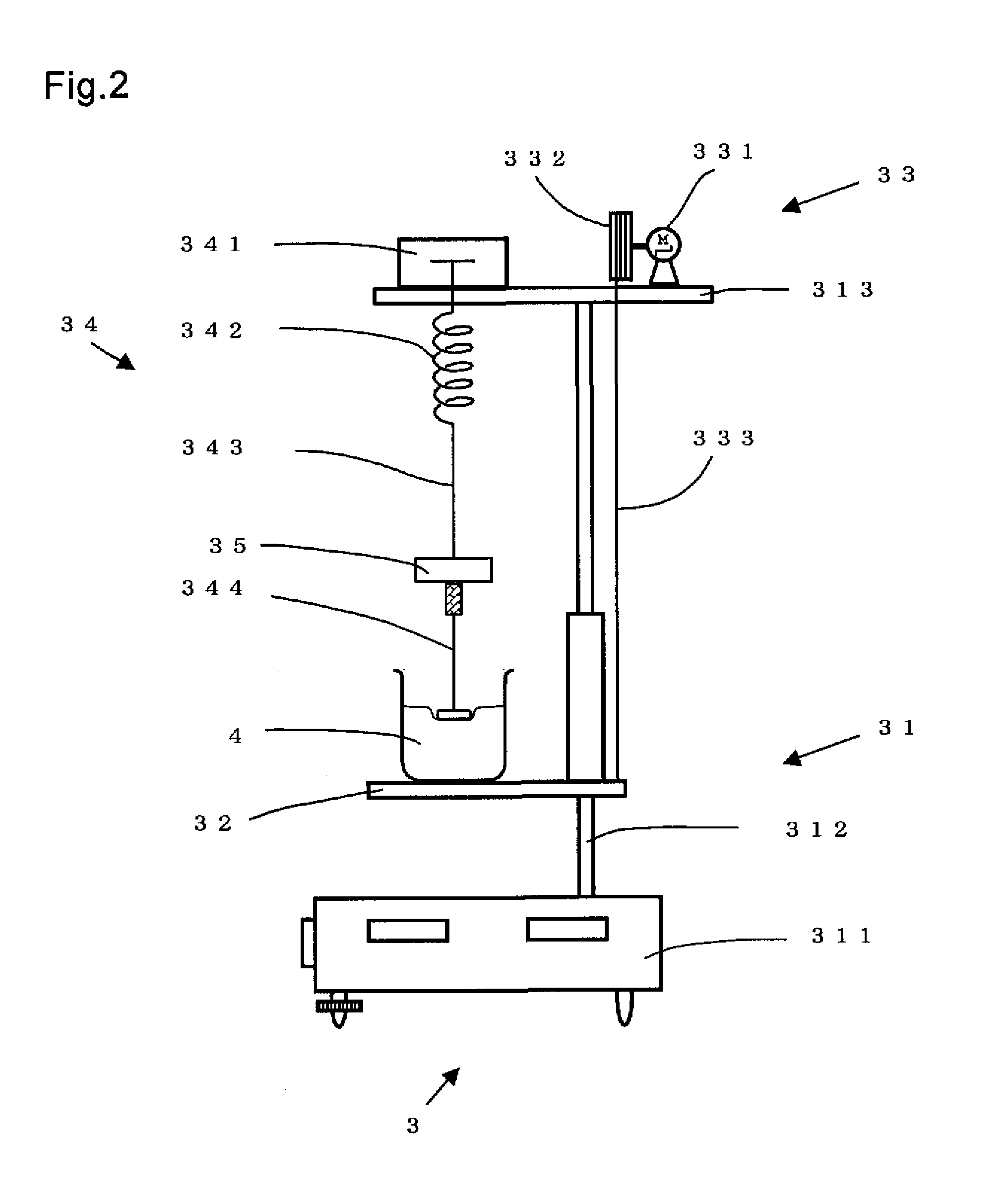Process for producing water-absorbing resin particles, water-absorbing resin particles made by the process, and absorbent materials and absorbent articles made by using the particles
a technology of water-absorbing resin and process, which is applied in the direction of synthetic resin layered products, natural mineral layered products, metal layered products, etc., can solve the problems of deterioration of the amenity of wearers, decrease in water-absorbing capacity of water-absorbing resin, and increase in flow-back of body fluid, so as to achieve high water-absorbing capacity and high gel strength. , the effect of high water-absorbing capacity
- Summary
- Abstract
- Description
- Claims
- Application Information
AI Technical Summary
Benefits of technology
Problems solved by technology
Method used
Image
Examples
example 1
[0070]Step 1: Preparation of Water-Absorbing Resin Particle Precursor
[0071]To a five-necked cylindrical round-bottom flask of 2000 mL volume equipped with a stirrer, a refluxing condenser, a dropping funnel, a thermometer and a nitrogen gas inlet tube, were added 340 g of n-heptane and 0.92 g of sucrose fatty acid ester having HLB of 3.0 [manufactured by Mitsubishi-Kagaku Foods Corporation, trade name: S-370], the mixture was heated to 70° C. while being dispersed, to dissolve materials and this was then cooled to 55° C.
[0072]Separately, 92 g (1.02 moles) of a 80.5% by mass aqueous acrylic acid solution was added to a conical flask of 500 mL volume. To this flask was added 102.2 g (0.77 mole) of a 30% by mass aqueous sodium hydroxide solution dropwise while cooling externally, to neutralize 75 mole % of acrylic acid. Further, 50.2 g of water, 0.11 g (0.00041 mole) of potassium persulfate as a water-soluble radical polymerization initiator, and 8.3 mg (0.000047 mole) of ethylene glyc...
example 2
[0082]According to the same manner as that of Example 1 except that an addition amount of the 2% by mass aqueous ethylene glycol diglycidyl ether solutions, which is a post-crosslinking agent used in the first post-crosslinking reaction step, was changed to 2.11 g (0.00024 mole), an addition amount of the 2% by mass aqueous ethylene glycol diglycidyl ether solution, which is a post-crosslinking agent used in the second post-crosslinking reaction step, was changed to 2.11 g (0.00024 mole), and water contents in the first and second post-crosslinking steps were changed to 45% and 29%, respectively, in Example 1, 222.4 g of a water-absorbing resin particle having a mass mean particle diameter of 373 μm was obtained. In addition, a final water content (drying loss) of the water-absorbing resin particle was 4%.
example 3
[0083]Step 1: Preparation of Water-Absorbing Resin Particle Precursor
[0084]To a five-necked cylindrical round-bottom flask of 2000 mL volume equipped with a stirrer, a refluxing condenser, a dropping funnel, a thermometer and a nitrogen gas inlet tube, were added 340 g of n-heptane and 0.92 g of sucrose fatty acid ester having HLB of 3.0 [manufactured by Mitsubishi-Kagaku Foods Corporation, trade name: S-370], the mixture was heated to 70° C. while being dispersed to dissolve the materials, and this was then cooled to 55° C.
[0085]Separately, 92 g (1.02 moles) of a 80.5% by mass aqueous acrylic acid solution was added to a conical flask of 500 mL volume. To this flask was added 102.2 g (0.77 mole) of a 30% by mass aqueous sodium hydroxide solution dropwise while cooling externally, to neutralize 75 mole % of acrylic acid. Further, 50.2 g of water, 0.11 g (0.00041 mole) of potassium persulfate as a water-soluble radical polymerization initiator, and 8.3 mg (0.000047 mole) of ethylene ...
PUM
| Property | Measurement | Unit |
|---|---|---|
| water content | aaaaa | aaaaa |
| water content | aaaaa | aaaaa |
| temperature | aaaaa | aaaaa |
Abstract
Description
Claims
Application Information
 Login to View More
Login to View More - R&D
- Intellectual Property
- Life Sciences
- Materials
- Tech Scout
- Unparalleled Data Quality
- Higher Quality Content
- 60% Fewer Hallucinations
Browse by: Latest US Patents, China's latest patents, Technical Efficacy Thesaurus, Application Domain, Technology Topic, Popular Technical Reports.
© 2025 PatSnap. All rights reserved.Legal|Privacy policy|Modern Slavery Act Transparency Statement|Sitemap|About US| Contact US: help@patsnap.com



